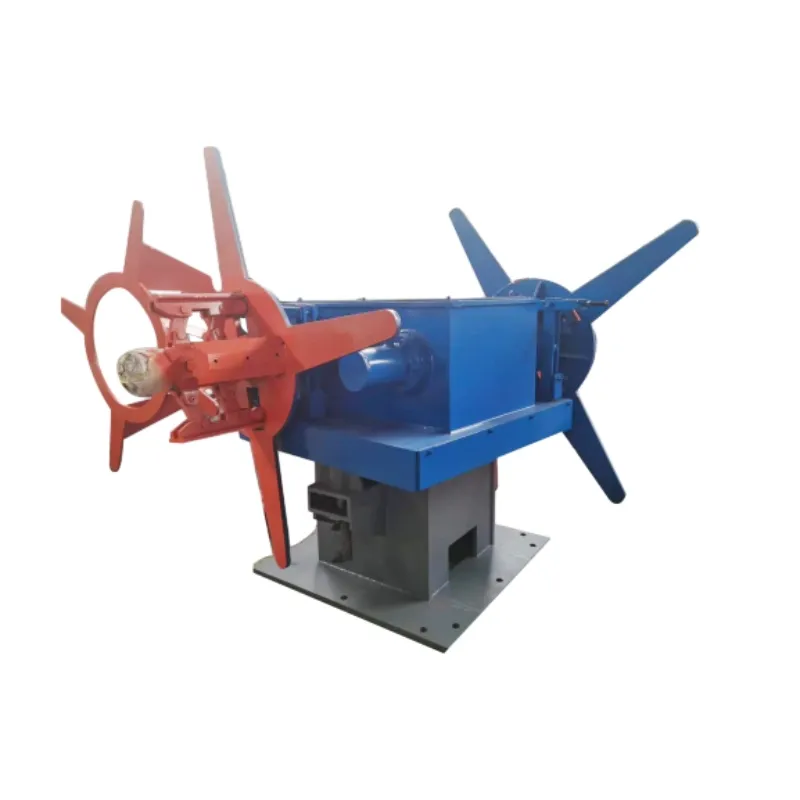Sheet Metal Straightening Equipment for Precision Fabrication and Enhanced Quality
Straightening Machines for Sheet Metal An Essential Tool in Metal Fabrication
In the world of metal fabrication, maintaining the integrity and appearance of metal sheets is crucial. Sheet metal, whether used in automotive manufacturing, aerospace applications, or architectural design, must often undergo straightening processes to ensure quality and performance. This is where straightening machines come into play, acting as an essential tool for achieving the desired flatness and precision in sheet metal components.
Understanding the Need for Straightening
Sheet metal can become distorted during various processes, such as cutting, welding, or bending. These deformations can lead to challenges in assembly, affect the overall functionality of a part, and can even compromise the aesthetic appeal of a finished product. Straightening machines help mitigate these issues by restoring the flatness of the metal sheets, ensuring they meet the required tolerances and specifications.
How Do Straightening Machines Work?
Straightening machines operate on a relatively simple yet effective principle. They utilize a series of rolls or hydraulic systems to apply controlled pressure to the sheet metal, manipulating it into a flatter shape. The machines often feature multiple rollers arranged in a specific pattern, which interact with the metal sheet as it passes through. This process is not only effective at removing bends and warps but also allows for the adjustment of various thicknesses and types of sheet metal.
The technology used in straightening machines can vary. Some machines are designed for manual operation, allowing an operator to control the adjustments and settings. Others are fully automated, equipped with sensors and computer controls that ensure precise straightening and minimize human error. The choice between manual and automated systems often depends on the specific requirements of the manufacturing process, including production volume and the desired level of precision.
Types of Straightening Machines
There are several types of straightening machines available in the market, each designed to cater to different needs and applications
1. Roller Straighteners These are commonly used in sheet metal processing. The rollers can be adjusted to apply varying levels of pressure depending on the thickness and material of the sheet. Roller straighteners are versatile and can handle a range of materials, making them a popular choice in many fabrication shops.
straightening machine for sheet metal

2. Hydraulic Straighteners Utilizing hydraulic pressure, these machines can exert significant force on heavier and thicker sheets that require more powerful straightening solutions. They often feature exceptional control over the straightening process, allowing for fine adjustments and higher accuracy.
3. Mechanical Straighteners These devices may use mechanical systems to achieve straightening. They are typically simpler in design and operation, making them suitable for shops with less intensive straightening needs.
Advantages of Using Straightening Machines
1. Enhanced Precision Straightening machines provide the ability to achieve high levels of precision, ensuring that metal sheets meet specification tolerances necessary for further processing and assembly.
2. Increased Efficiency By automating the straightening process, manufacturers can significantly reduce the time and labor required for manual straightening. This efficiency translates into improved production rates and lower operational costs.
3. Improved Quality Straightened sheet metal is less prone to defects during subsequent processes, leading to higher quality end products. The elimination of imperfections due to warping or misalignment plays a crucial role in maintaining product standards.
4. Versatility Modern straightening machines can handle various materials, including aluminum, steel, and stainless steel, making them applicable in diverse industries.
Conclusion
In conclusion, straightening machines for sheet metal are a vital component of the metal fabrication process. They not only enhance the quality and precision of metal sheets but also contribute to overall efficiency in manufacturing. As industries continue to demand higher standards and faster production times, the role of straightening machines will only become more pivotal. Investing in advanced straightening technology can lead to significant benefits, ensuring that metal components meet the rigorous demands of modern applications. Whether in small workshops or large-scale production facilities, the functionality and advantages provided by these machines make them indispensable tools in the realm of sheet metal fabrication.
-
High Frequency Straight Seam Welded Pipe Production Line-BzZhou Xinghua Machinery Equipment Manufacturing Co., LTD.|line pipe steel&welded gas pipeNewsJul.30,2025
-
High Frequency Straight Seam Welded Pipe Production Line-BzZhou Xinghua Machinery Equipment Manufacturing Co., LTD.|High Precision&Automated SolutionsNewsJul.30,2025
-
High Frequency Straight Seam Welded Pipe Production Line - BzZhou Xinghua Machinery Equipment Manufacturing Co., Ltd.NewsJul.30,2025
-
High Frequency Straight Seam Welded Pipe Production Line-BzZhou Xinghua Machinery Equipment Manufacturing Co., LTD.|Precision Welding, High EfficiencyNewsJul.30,2025
-
High Frequency Straight Seam Welded Pipe Production Line|BzZhou Xinghua|Precision Welding&EfficiencyNewsJul.30,2025
-
High Frequency Straight Seam Welded Pipe Production Line - BzZhou Xinghua|Precision Engineering&EfficiencyNewsJul.30,2025


